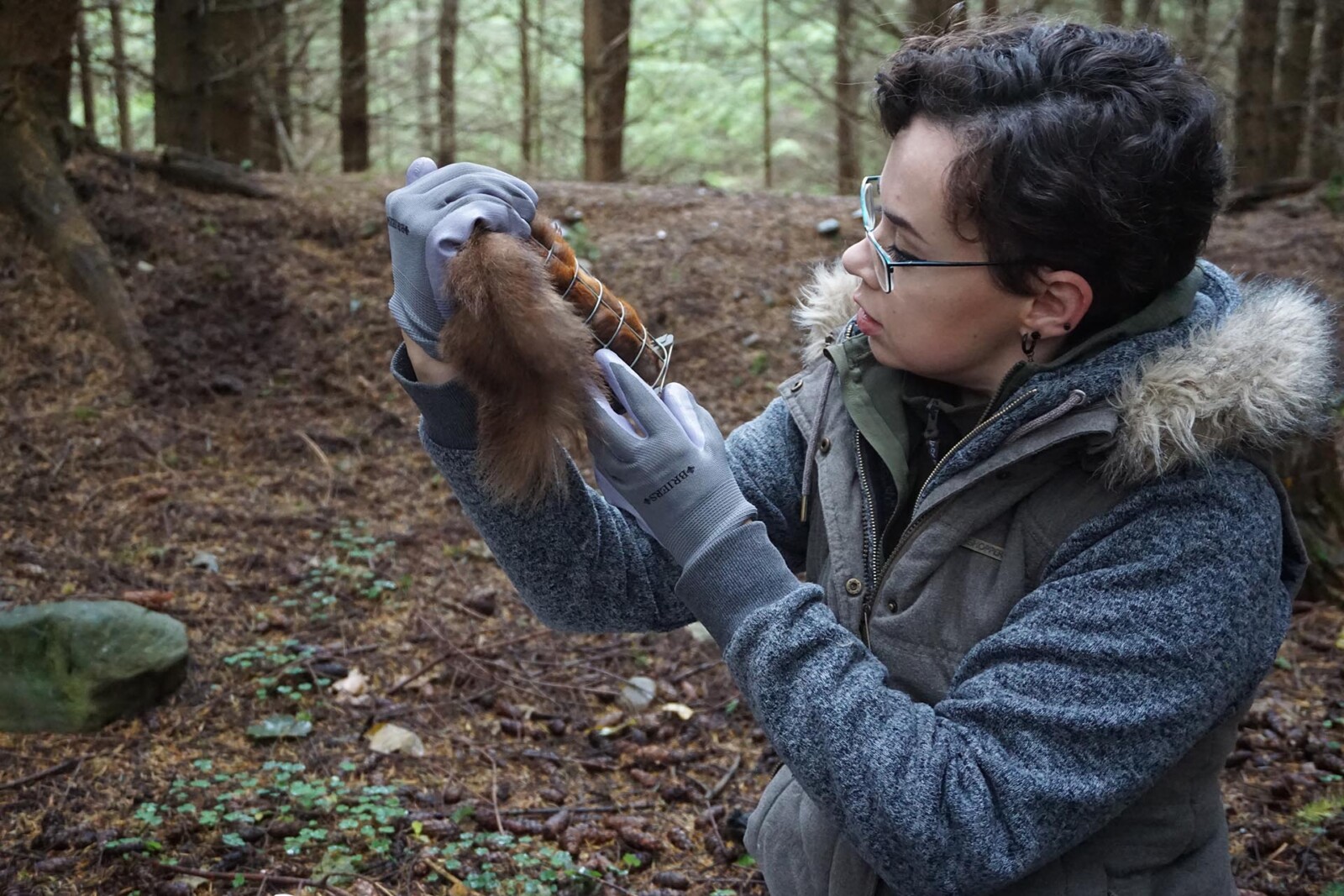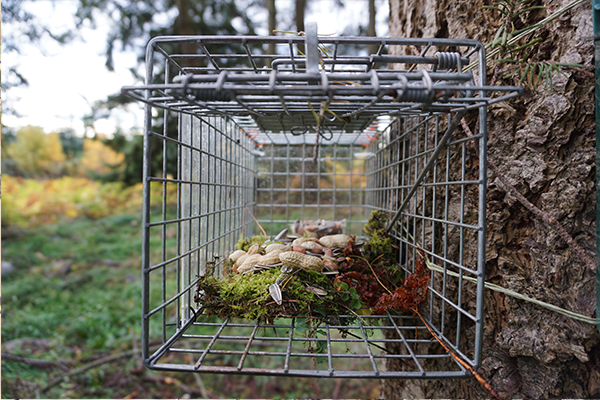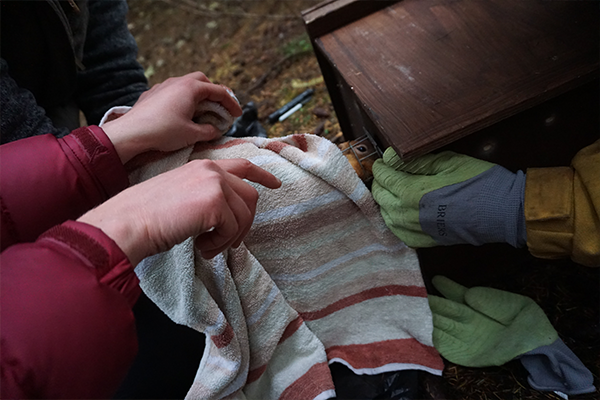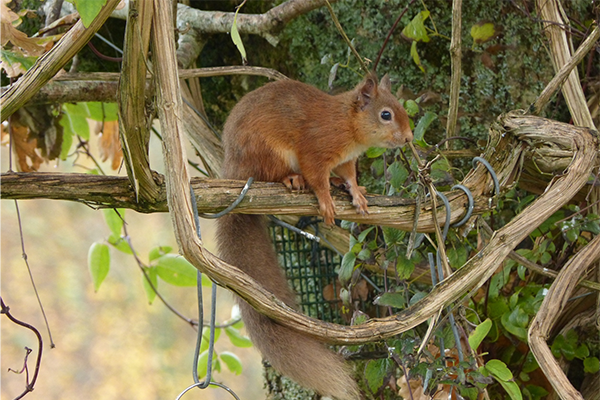How do you translocate a red squirrel?
In 2016 Trees for Life started its Red Squirrel Reintroduction Project to create new squirrel populations across the north-west Scottish Highlands.
We know that reds used to live in this part of Scotland, but historical habitat loss and human persecution meant they had all but disappeared. However, improved forest cover and connectivity in recent years, plus the fact that invasive grey squirrels aren’t in the area, presented a rewilding opportunity. Reds can thrive in the north west, they just need some help in getting there!
This autumn we successfully translocated 22 squirrels to Arisaig, marking our 11th release site so far.
Deciding where to start
Sarah Woodfin, our Red Squirrel Project Manager, carefully started planning the translocation in the summer.
Preparations start with the site selection. During this process, Sarah is ensuring the new location is the ideal environment for the red squirrels to flourish.
Choosing the right site is crucial. A minimum of 180 hectares of diverse forest cover is essential, comprising a mix of tree species like oak, Scots pine, hazel, chestnut, beech, fir, and larch – all of which offer nourishment for the red squirrels year-round. We avoid species like Sitka spruce and birch, which don’t provide as good a diet.


Precapture procedures
Our precapture process involves sourcing red squirrels from healthy populations in Moray, Inverness-shire, and the central Highlands. We follow strict guidelines, taking only two squirrels per 200 hectares to maintain population health and genetic diversity.
To minimise stress during capture, source locations are baited for at least a month, creating a familiar and enticing environment. Traps are strategically placed on trees and baited in the final week with nuts. They are also lined with moss so the squirrels are comfortable entering and exiting.
Cautious capture and health checks
Trap days begin at dawn when the squirrels are most active. Traps are monitored hourly to avoid spooking the squirrels.
Captured individuals undergo thorough health checks before relocation. These checks include examining wounds, ensuring overall health, and ruling out threats like squirrel pox and leprosy. Only healthy individuals make the journey to their new home, with a balanced ratio of male to female to foster a healthy population dynamic.


Careful release and monitoring
The release process needs to consider weather conditions and travel distance. Nest boxes filled with food and bedding provide a safe transition for the squirrels. On arrival it can take them several days to build a drey (nest) and find food, so we will only release them in favourable conditions and trap day can be cancelled at short notice if the weather is poor.
Post-release, ongoing monitoring is key. Camera traps, sightings records, and presence counts help us track their dispersal. Sustained feeding at release sites for six months helps them adjust to their new surroundings, particularly during the challenging winter and spring months.
The Red Squirrel Reintroduction project is generously funded by The Orp Foundation, European Outdoor Conservation Association (EOCA), and People’s Trust for Endangered Species (PTES).

